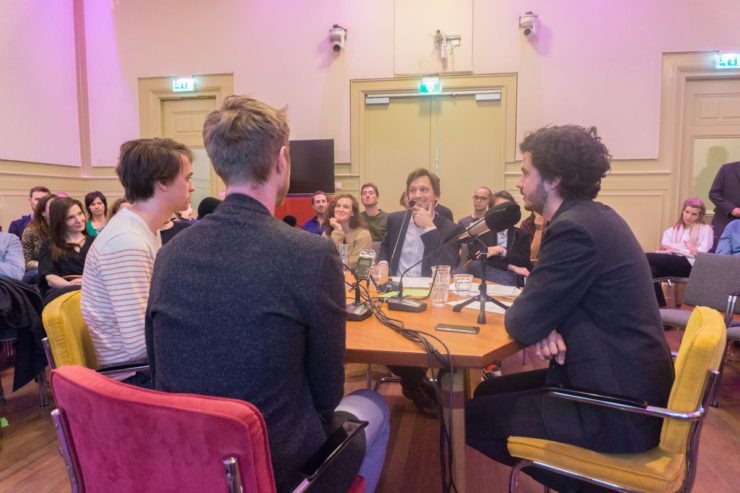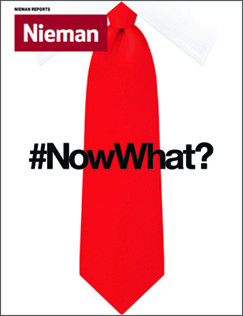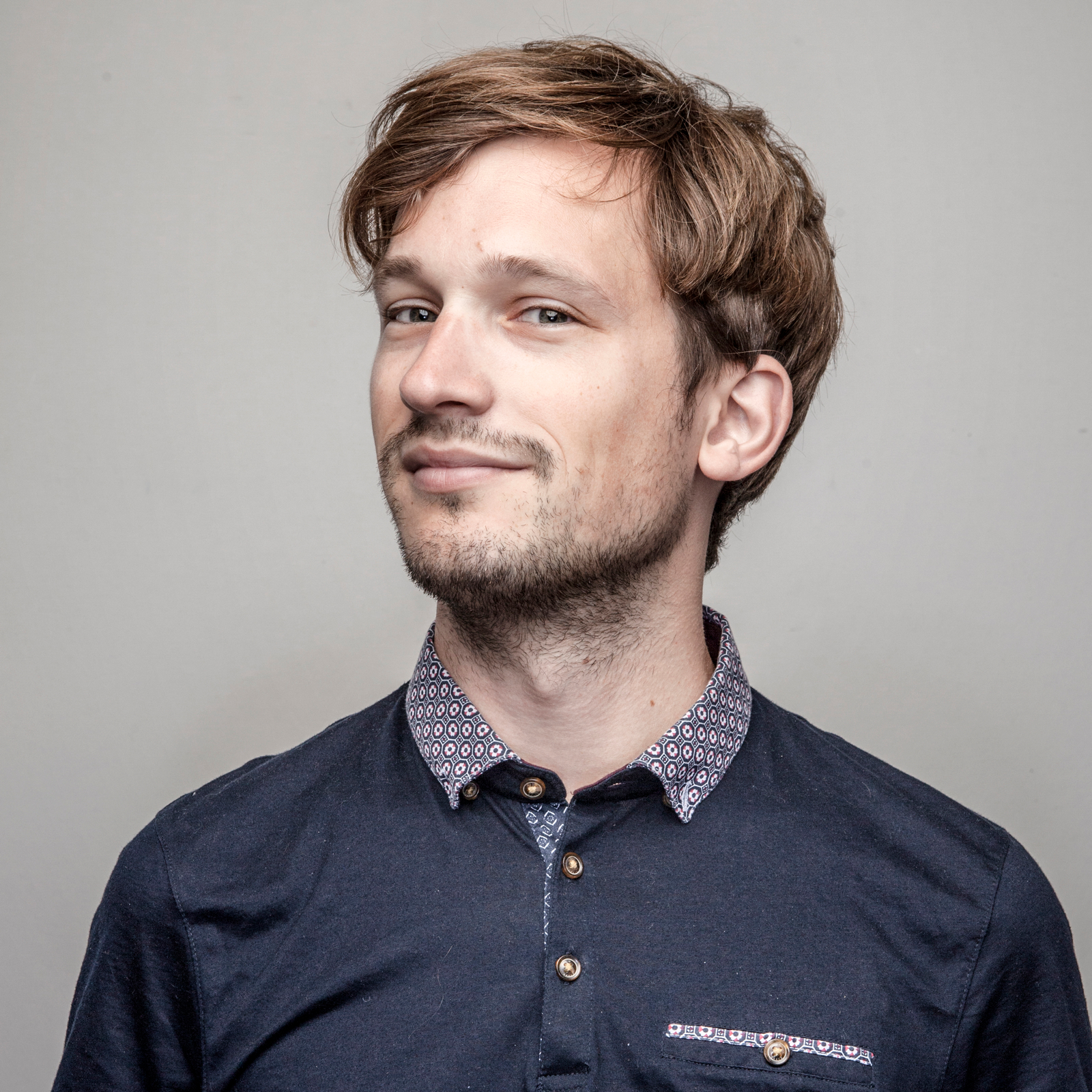
Tim de Gier, here recording a podcast, is developing a business out of his passion for cycling and connecting with audiences
The work of a print journalist can be very unrewarding. When I worked for a magazine, writing a piece could take several weeks. The potential audience was 100,000. Often, this is the response: 15 likes on Facebook, maybe one angry letter, five friends who promised to read it. On a lucky day, some people share the article.
Then in the summer of 2016 I started a podcast about the Tour de France. It was in many ways a marginal project, a podcast recorded with hardly any skills on a niche subject. We expected 1,000 listeners per episode but the response was overwhelming: Facebook likes, retweets, emails expressing gratitude, angry listeners because the podcast was too late, listeners providing us with useful information, invitations to cover more cycling races. By Christmas we even got “Happy Holidays” cards.
On the last day of the Tour de France I celebrated finishing the first season of our show—a podcast every day for three weeks straight—by having a beer with a friend in the Amsterdam sun. That friend appeared to like podcasts as much as me and was looking for a new career path. The both of us were concerned about media and where the industry is going. Podcasting, we figured, is a big opportunity, mostly for a new, deeper connection between the media and its audience. That’s why we decided to launch Dag en Nacht (“Day and Night”) Media, a platform for Dutch podcasts.
We reached out to other podcasters. There weren’t any podcasting networks yet in the Netherlands. Four other podcasts joined, some of them much bigger than ours. One on new media and tech, one on babies and toddlers, one with real life stories. The plan was to find advertisers together. Maybe one advertiser for each show, to begin with. We did like most startups do: we started in the living room furiously filling in Excel sheets. I kept my daytime job as books editor for a national paper and did most of the work at night and on the weekend. We asked a friend to design us a logo. We bought some basic equipment. We had lots of coffee meetings and afternoons where we’d write ideas on bright colored Post-its. And eventually, after five months of preparations, we organized a launch party and spent too much money on drinks.
Since we launched earlier this year, things went faster then the average race day in the Tour de France. We made the silly mistake of putting a contact form on our website. The phone didn’t stop ringing for weeks. During the week of our launch party in April we were interviewed by papers and magazines. An unexpectedly large number of people and organizations appeared to be interested in podcasts. Now, with more than 130,000 listeners a month, we’re still working extra hours to respond to all the contact requests from advertising partners as well as news outlets, magazines, and companies that want to hire us to make podcasts with them.
Fortunately, we can learn how to scale by looking carefully at Radiotopia, Gimlet, and Acast. But we’re much smaller still and the context of the Netherlands is different. For one thing, we watch a lot of cycling here. We have no idea where we’ll be a year from now, but hopefully the phone will keep ringing.



